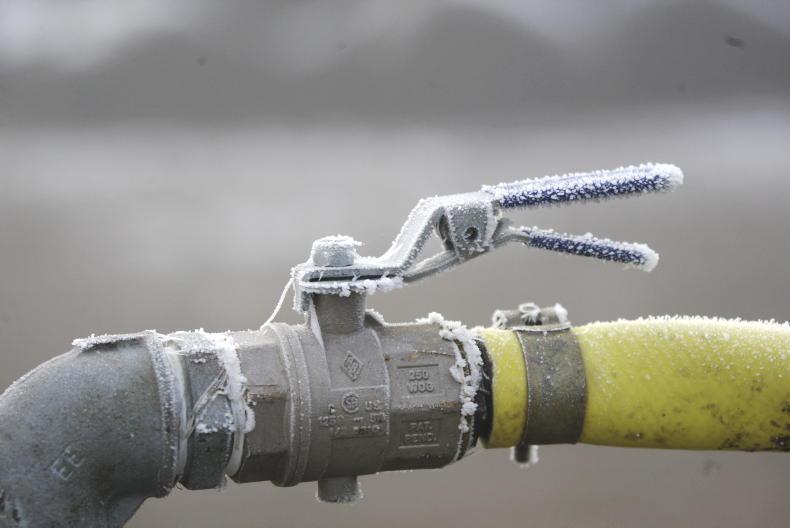Weather forecasts show that east winds will dominate in the coming days, dropping daytime temperatures and making overnight frost a common feature, particularly on farms in upland areas.
Frosty conditions pose challenges for farmers going about their daily routine.
Outlined are five things to keep in mind and make the farm a safer working environment after heavy frost.
Removing the cover on the silage pit
Take care when moving the cover on top of the silage clamp, as frost will make the plastic slippy. Ideally, remove the cover in daylight over the weekend, exposing enough silage to last the week.
Wait until the frost has lifted before climbing on the pit and use a ladder that is properly secured to make the job safer.
Water provision
If there is exposed metal water piping that is prone to freezing, apply some form of lagging for insulation.
Filling an IBC container with water will provide a good back-up in the event that a water pipe does freeze and burst. Have a few spare joints in store, just in case repairs are needed.
Leaving an outdoor tap slightly turned on will also reduce the risk of pipes freezing. Just make sure water is being collected in an IBC or drain pipe, rather than running across the yard and creating ice.
Machinery
Check that tractors and loaders are topped up with anti-freeze and keep a spare battery or booster pack to hand, just in case older machines are slow to start on mornings following heavy frost.
Moving the fence for cattle grazing kale
If cattle are being outwintered on kale or crops such as forage rape and stubble turnips, do not move the electric wire to give the next grazing allocation in the morning.
Wait until the frost has lifted. Frost will increase the nitrate levels in such crops and can lead to poisoning if cattle ingest excessive levels.
Delay cattle handling tasks until afternoon
If the yard has ice lying, delay any tasks where cattle have to be removed from the shed for handling until the ice has thawed.
Read more
Beef Management: calf creep hygiene and finishing cattle costs
Suckler cow cull scheme recommended
Weather forecasts show that east winds will dominate in the coming days, dropping daytime temperatures and making overnight frost a common feature, particularly on farms in upland areas.
Frosty conditions pose challenges for farmers going about their daily routine.
Outlined are five things to keep in mind and make the farm a safer working environment after heavy frost.
Removing the cover on the silage pit
Take care when moving the cover on top of the silage clamp, as frost will make the plastic slippy. Ideally, remove the cover in daylight over the weekend, exposing enough silage to last the week.
Wait until the frost has lifted before climbing on the pit and use a ladder that is properly secured to make the job safer.
Water provision
If there is exposed metal water piping that is prone to freezing, apply some form of lagging for insulation.
Filling an IBC container with water will provide a good back-up in the event that a water pipe does freeze and burst. Have a few spare joints in store, just in case repairs are needed.
Leaving an outdoor tap slightly turned on will also reduce the risk of pipes freezing. Just make sure water is being collected in an IBC or drain pipe, rather than running across the yard and creating ice.
Machinery
Check that tractors and loaders are topped up with anti-freeze and keep a spare battery or booster pack to hand, just in case older machines are slow to start on mornings following heavy frost.
Moving the fence for cattle grazing kale
If cattle are being outwintered on kale or crops such as forage rape and stubble turnips, do not move the electric wire to give the next grazing allocation in the morning.
Wait until the frost has lifted. Frost will increase the nitrate levels in such crops and can lead to poisoning if cattle ingest excessive levels.
Delay cattle handling tasks until afternoon
If the yard has ice lying, delay any tasks where cattle have to be removed from the shed for handling until the ice has thawed.
Read more
Beef Management: calf creep hygiene and finishing cattle costs
Suckler cow cull scheme recommended






 This is a subscriber-only article
This is a subscriber-only article










SHARING OPTIONS: